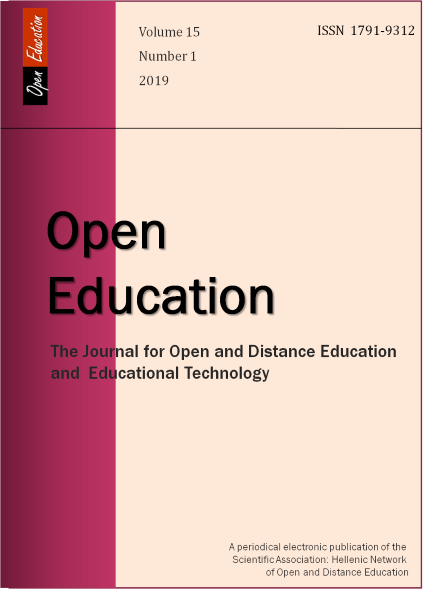“Εφαρμογή του μαθησιακού μοντέλου 4ΜΑΤ με την αξιοποίηση authoring tools (CourseLab) στη διδασκαλία των αρχαίων ελληνικών”
Resumen
Η εργασία σχεδιάστηκε για να διερευνήσει αν υπάρχουν διαφορές στα μαθησιακά αποτελέσματα που προκύπτουν από την εφαρμογή τριών παιδαγωγικών μεθόδων, την παραδοσιακή, την βασισμένη στο μοντέλο 4ΜΑΤ και έναν συνδυασμό 4ΜΑΤ και ηλεκτρονικής μάθησης στην οποία χρησιμοποιήθηκε το authoring tool CourseLab. Ελέγχθηκαν τα μαθησιακά αποτελέσματα που προέκυψαν από την εφαρμογή των μεθόδων αυτών σε 67 μαθητές της Α΄Λυκείου του δημόσιου ΓΕΛ Ν.Μάκρης, στο μάθημα των αρχαίων ελληνικών. Η αξιολόγηση των μεθόδων βασίστηκε σε κριτήρια αξιολόγησης και στα βαθμολογικά δεδομένα που προέκυψαν από αυτά, εφαρμόστηκαν τα κριτήρια One-way ANOVA και Kruskall-Wallis. Τα ευρήματα της έρευνας έδειξαν ότι καμία από τις μεθόδους δε φαίνεται να υπερτερεί έναντι των άλλων. Διανεμήθηκαν ερωτηματολόγια που συμπληρώθηκαν από τους μαθητές/τριες για να αξιολογηθεί το ηλεκτρονικό μάθημα και να αποτιμηθεί η στάση των παιδιών απέναντι σε αυτή τη μορφή διδασκαλίας. Οι μαθητές/τριες φαίνεται ότι απέναντι στο ψηφιακό μάθημα που ήταν δομημένο με τις αρχές του μοντέλου 4ΜΑΤ είχαν θετικότερη στάση σε σχέση με την παραδοσιακή διδασκαλία.
Article Details
- Cómo citar
-
- Número
- Vol. 15 Núm. 1 (2019)
- Sección
- Μέρος πρώτο / Section 1



